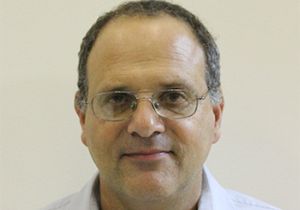An international team led by biophysicist Shimon Weiss, who holds UCLA’s Dean M. Willard Chair in Chemistry, has been awarded a prestigious Human Frontier Science Program (HFSP) research grant of $1.35 million over three years. The HFSP international program supports frontier research on the complex mechanisms of living organisms.
 Professor Shimon Weiss. Credit:UCLA
Professor Shimon Weiss. Credit:UCLA
Weiss is a professor of chemistry and biochemistry in the UCLA College, a professor of physiology in the David Geffen School of Medicine and a member of the California NanoSystems Institute at UCLA. He is one of the world’s leading chemists in the use of single-molecule techniques, especially in the study of biological molecules, and has developed instrumentation and methodologies to study single biomolecules.
His group at UCLA is enhancing our understanding of proteins, life’s most important class of molecules, using state-of-the-science technologies known as fluorescence spectroscopy, fluorescence microscopy and biological imaging. His research team studies enzymes, a class of proteins that are vital for catalyzing other biochemical reactions necessary for life.
The multidisciplinary international HFSP team headed by Weiss consists of scientists from France (neurobiology Antoine Triller), Germany (physicist Joerg Enderlein) and Israel (physicist Dan Oron). The team has realized that noninvasive tools for studying and interfacing the central and peripheral nervous systems provide structural and functional information, but at low spatial resolution. On the other hand, invasive recording methods provide high temporal resolution data from single neurons, but are bulky and lack spatial resolution and throughput. The HFSP team therefore will develop injectable, targetable voltage-sensing inorganic particles that insert themselves into the membrane and optically and non-invasively record action potentials (neuronal signals) at the nanoscale, on the signal particle level — at multiple sites and across a large field-of-view.
If successful, the team’s voltage nanosensors would greatly enhance our ability to study the brain.